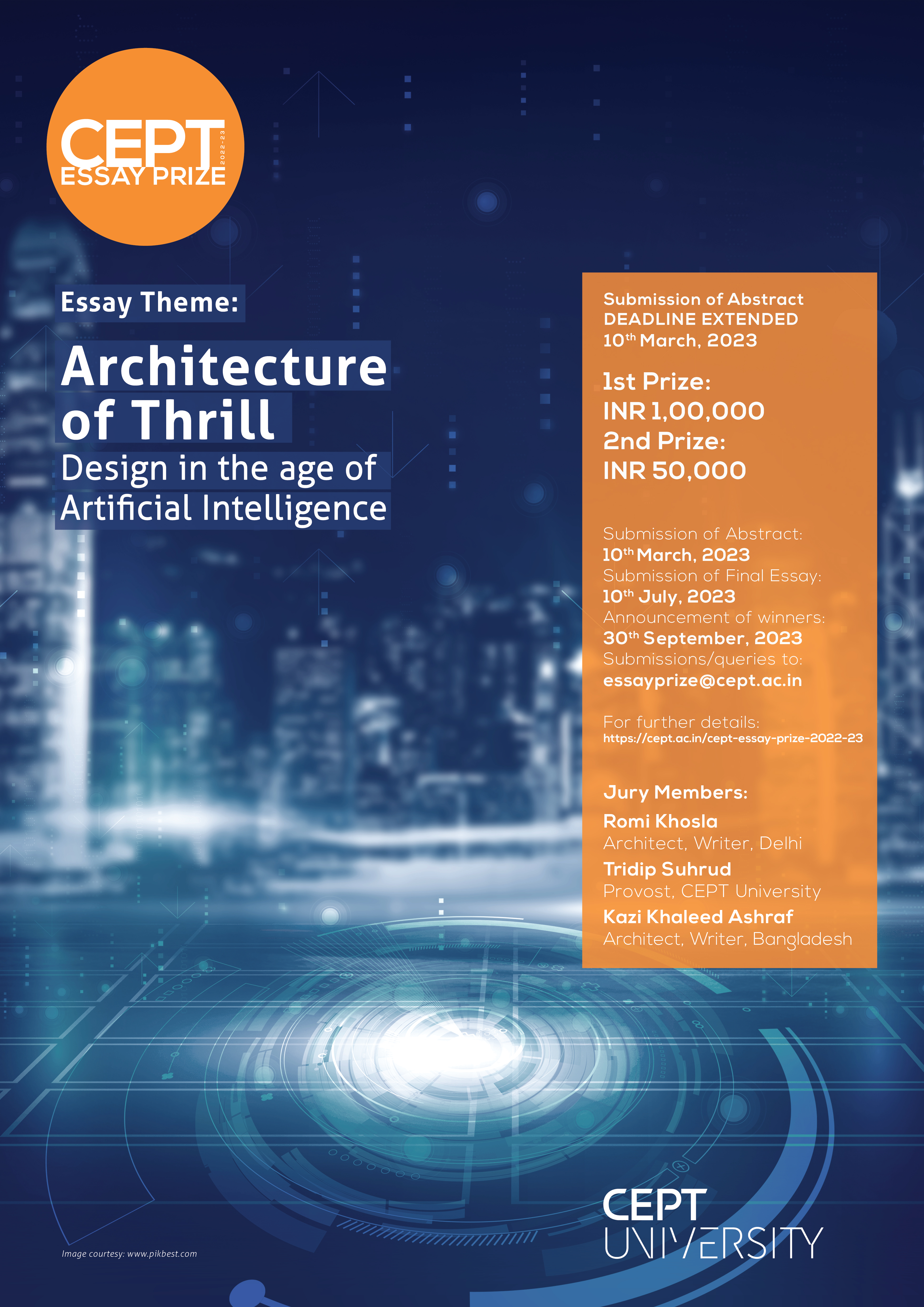President's Office
CEPT Essay Prize 2022
Essay Theme:
Architecture of Thrill - Design in the age of Artificial Intelligence
Submission of Abstract: 10th March 2023 (Deadline Extended)
Digital technologies have expanded the toolkit for architects and urbanists expeditiously. From drafting softwares and computational tools, to the digitisation of every tool possible, the digital turn has facilitated the arrival of a multitude of ways for design generation and visualisation. For instance, parametric modelling has enabled the development of inconceivable spaces, geometries, and urban scapes in great speed. Design options can be tested with a number of parameters in a matter of a few minutes. These technologies have revolutionized the decision and design-making processes within architectural and urbanism practice.
In recent times, AI and machine learning have also entered the design toolkit and is being used and integrated by professionals all around the world. While it's still in its infancy, its various forms of applications are a testament to its gradual emergence. Tools such as XKool offer data analysis and dynamic urban-planning solutions. Applications such as DALL.E or Mid Journey have thrilled their users, with its potential to generate infinite realistic images from text descriptions. The process itself is not propelled towards designing the end objects, but rather to map choices, which will aid the generation of the object, thus expanding the horizon of imagination exponentially.
These developments have elicited primarily two responses. One that perceives AI as a threat to design and the creative process and is concerned with how the frameworks are going to be responsive to the social context. The second response sees it as a tool that will enhance knowledge, optimize time and push the boundaries of design thinking. This framework does not look at these developments as a threat and asserts that they will not displace the essential value of architects and professionals.
Amidst growing questions about the potential usage of AI, it is clear that these tools have arrived and will have some form of impact in the way the built environment is conceptualized, constructed, and assembled. This year’s essay invites you to reflect on the future of AI technology in design. You may choose to argue or offer new perspectives on AI-driven information systems or debunk the commonly held misconceptions or trepidations associated with it.
Click on the image to enlarge

